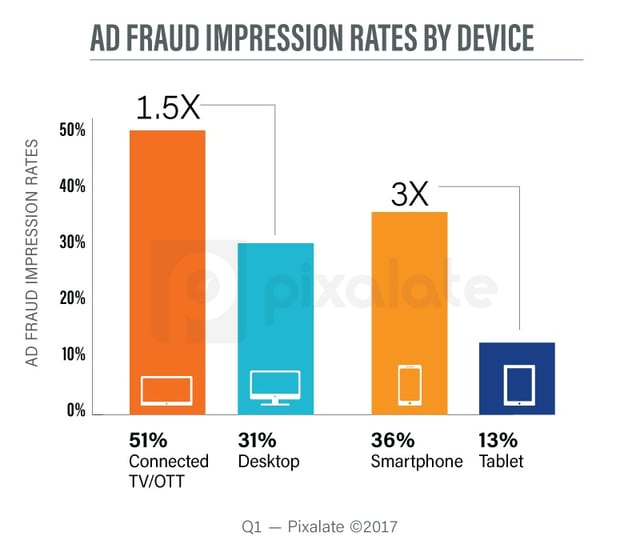Pixalate, Inc., the global leader in fraud protection and data intelligence, today released the March 2017 rankings in the Global Seller Trust (GSTI), Mobile Seller Trust (MSTI), and Video Seller Trust (VSTI) Indexes.
New this month we offer an enhanced version of the rankings with powerful, proprietary insights into Q1 2017 ad fraud trends, uncovered by Pixalate’s team of data scientists. Highlights include:

For a full look at Q1 2017 programmatic ad fraud rates across desktop, mobile, and video around the globe, see our blog post.
Below are some of the key takeaways regarding movers and shakers at the top of the rankings.
Utilizing proprietary technology, the GSTI, MSTI, and VSTI each analyze more than 200 data points for over 100 billion monthly ad impressions and deliver ratings based upon inventory quality and ad performance, along with traditional reach and share of audience metrics.
About Pixalate’s Seller Trust Indexes
Pixalate’s monthly Global Seller Trust Index (GSTI), Mobile Seller Trust Index (MSTI), and Video Seller Trust Index (VSTI) are the worldwide standards in programmatic advertising quality ratings. Released monthly, the indexes evaluate and rank the quality and integrity of advertising networks and sellers across channels, platforms, and devices.
Global quality ratings are based upon an analysis of overall effectiveness assessing multiple factors, such as viewability, fraud, engagement, domain masking, network quality and more, in compliance with recognized industry standards.
To learn more about the methodology and to download the expanded list of top sellers, visit http://www.pixalate.com/sellertrustindex.
About Pixalate
Pixalate, Inc. is a leading global intelligence platform and real-time fraud protection provider. Pixalate is a Media Rating Council-accredited vendor for display ad viewability. For more information, please visit pixalate.com.
*By entering your email address and clicking Subscribe, you are agreeing to our Terms of Use and Privacy Policy.
These Stories on Rankings
*By entering your email address and clicking Subscribe, you are agreeing to our Terms of Use and Privacy Policy.

Disclaimer: The content of this page reflects Pixalate’s opinions with respect to the factors that Pixalate believes can be useful to the digital media industry. Any proprietary data shared is grounded in Pixalate’s proprietary technology and analytics, which Pixalate is continuously evaluating and updating. Any references to outside sources should not be construed as endorsements. Pixalate’s opinions are just that - opinion, not facts or guarantees.
Per the MRC, “'Fraud' is not intended to represent fraud as defined in various laws, statutes and ordinances or as conventionally used in U.S. Court or other legal proceedings, but rather a custom definition strictly for advertising measurement purposes. Also per the MRC, “‘Invalid Traffic’ is defined generally as traffic that does not meet certain ad serving quality or completeness criteria, or otherwise does not represent legitimate ad traffic that should be included in measurement counts. Among the reasons why ad traffic may be deemed invalid is it is a result of non-human traffic (spiders, bots, etc.), or activity designed to produce fraudulent traffic.”

